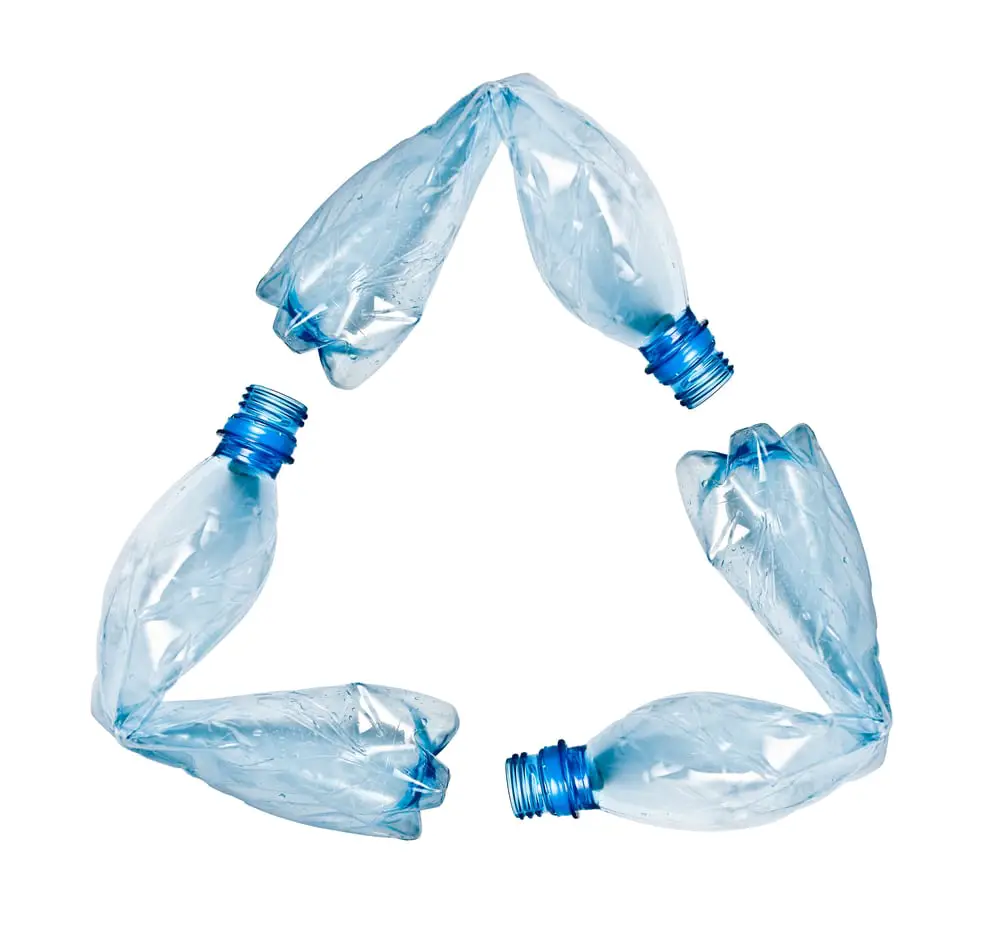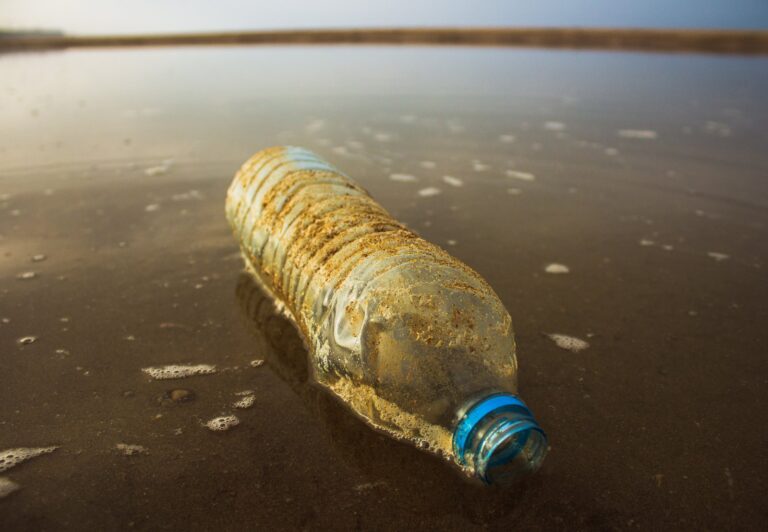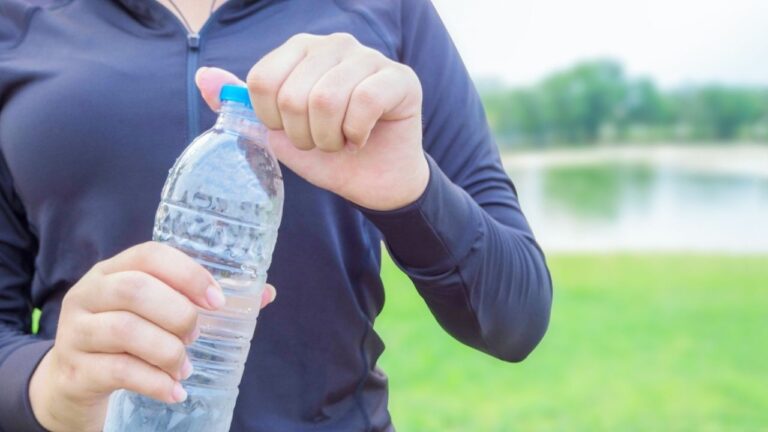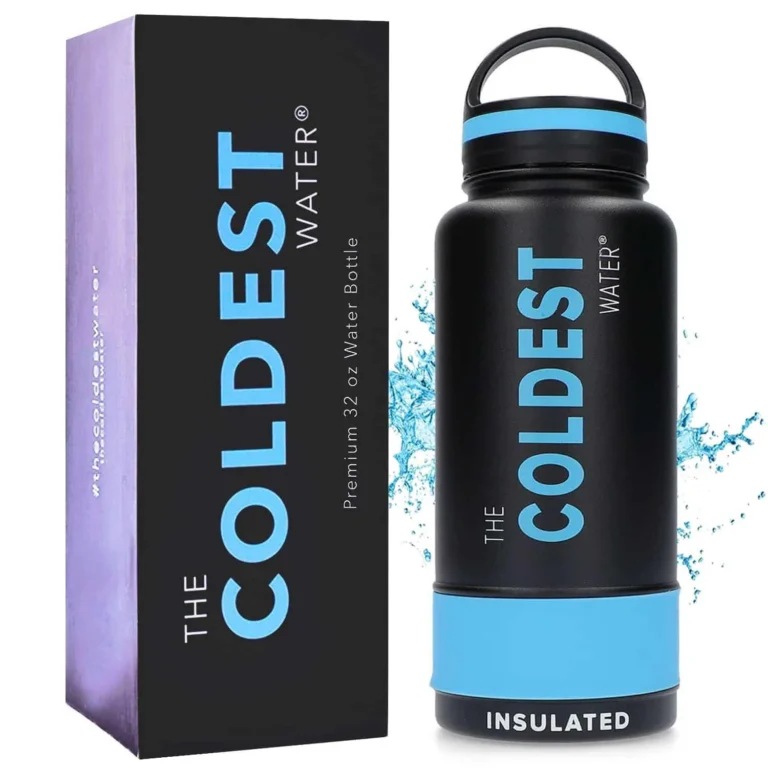Plastic water bottles have become a common sight in our daily lives, but are we truly aware of their impact on the environment? One burning question that arises is whether or not these plastic water bottles are recyclable. In this blog post, we will dive into the factual data surrounding the recyclability of plastic water bottles and explore the steps we can take to ensure their proper disposal. So, let’s uncover the truth about the recyclability of plastic water bottles and make informed choices for a greener future.
I. Importance of recycling and reducing plastic waste
Recycling and reducing plastic waste are crucial for the environment and the health of our planet. Plastic pollution has become a global crisis, with plastic water bottles being one of the major contributors. By recycling these bottles, we can significantly reduce the amount of plastic waste that ends up in landfills and our oceans, where they harm wildlife and ecosystems.
The process of recycling plastic water bottles involves collecting and sorting them, cleaning and preparing them for reprocessing, and turning them into new products. This helps conserve resources, reduce energy consumption, and decrease greenhouse gas emissions compared to producing new plastic.
By recycling plastic water bottles, we are also conserving energy. Producing new plastic bottles requires the extraction of fossil fuels, which contributes to climate change. Recycling helps reduce the demand for virgin materials, which in turn saves energy and reduces carbon emissions.
It is important for individuals to be mindful of their plastic bottle consumption and properly recycle them when finished. By making conscious choices, we can contribute to a more sustainable future and work towards a circular economy where plastic is reused and recycled rather than discarded.
Explanation of plastic recycling symbols
Plastic recycling symbols are universally recognized symbols that provide information about the type of plastic used in a product, as well as its recyclability. These symbols are typically found on the bottom of plastic bottles and other plastic products. Here are some common plastic recycling symbols and their meanings:
- PET (Polyethylene Terephthalate) – Symbolized by a number 1 inside the recycling symbol. PET bottles are widely accepted by recycling facilities and can be easily recycled into new products such as clothing, carpet, and packaging materials.
- HDPE (High-Density Polyethylene) – Symbolized by a number 2 inside the recycling symbol. HDPE bottles are also commonly recycled and can be turned into new bottles, plastic lumber, and drainage pipes.
- PVC (Polyvinyl Chloride) – Symbolized by a number 3 inside the recycling symbol. PVC is rarely recycled due to the presence of toxic additives. It is best to avoid products made from PVC.
- LDPE (Low-Density Polyethylene) – Symbolized by a number 4 inside the recycling symbol. LDPE is less commonly recycled than PET and HDPE but can be recycled into plastic bags, plastic film, and plastic lumber.
- PP (Polypropylene) – Symbolized by a number 5 inside the recycling symbol. PP is widely accepted by recycling facilities and can be recycled into new products such as automotive parts, storage containers, and packaging.
It is important to note that the presence of a recycling symbol does not guarantee that the plastic will be recycled in all locations. Recycling capabilities vary by region, so it is best to check with your local recycling facility to determine which plastics are accepted in your area.
II. Types of Plastic Water Bottles
Overview of different types of plastic used in water bottles
Plastic water bottles are typically made from a variety of different plastics, each with its own unique properties. The most common types of plastics used in water bottles are PET (Polyethylene terephthalate) and HDPE (High-density polyethylene).
1. PET: PET is a lightweight, clear plastic that is commonly used for single-use water bottles. It is easily recyclable and widely accepted by recycling facilities. PET bottles are marked with the recycling symbol number 1 inside the chasing arrows triangle.
2. HDPE: HDPE is a tougher plastic that is also commonly used for water bottles. It is opaque and has a higher melting point than PET. HDPE bottles are typically used for larger water bottles and are also widely recyclable. HDPE bottles are marked with the recycling symbol number 2 inside the chasing arrows triangle.
When recycling plastic water bottles, it is important to check the recycling symbol to determine the type of plastic used. This helps recycling facilities separate and process the bottles more efficiently. By recycling these plastics, we can reduce the environmental impact of plastic waste and promote a more sustainable future.
Explanation of the most common plastic types: PET and HDPE
Plastic water bottles are typically made from two of the most common types of plastic: PET (Polyethylene Terephthalate) and HDPE (High-Density Polyethylene).
PET: PET is a lightweight, transparent plastic that is commonly used for single-use beverage bottles. It is highly recyclable and can be easily identified by the recycling symbol with the number 1 inside it. PET bottles are commonly used for water, soda, and other carbonated beverages. They are accepted by most recycling programs and can be recycled into a variety of products such as clothing, carpets, and packaging materials.
HDPE: HDPE is a more durable and rigid plastic that is commonly used for milk jugs, detergent bottles, and certain types of water bottles. It is easily recognized by the recycling symbol with the number 2 inside it. HDPE bottles are also widely accepted by recycling programs and can be recycled into various products such as plastic lumber, drainage pipes, and plastic crates.
Both PET and HDPE bottles are highly recyclable, and recycling them helps to reduce the demand for new plastic and conserve resources. It is important to properly sort and clean the bottles before recycling to ensure they can be processed efficiently. By recycling plastic water bottles, individuals can contribute to the reduction of plastic waste and help create a more sustainable future.
III. Recyclability of Plastic Water Bottles
Explanation of the recyclability of PET and HDPE bottles
PET and HDPE, which are commonly used in water bottles, are highly recyclable plastics.
PET (Polyethylene terephthalate) is a widely used plastic that is lightweight, transparent, and has good resistance to impact and chemicals. It is commonly used for single-use water bottles. PET bottles are highly recyclable and can be made into new bottles or transformed into other products such as polyester fibers for clothing or carpeting.
HDPE (High-density polyethylene) is another commonly used plastic in water bottles. It is known for its strength, rigidity, and resistance to impact and chemicals. HDPE bottles can be processed into new bottles or converted into various products, including plastic lumber, drainage pipes, and containers.
It’s important to note that while PET and HDPE are recyclable, the recyclability of a plastic bottle also depends on other factors. These include the local recycling infrastructure, the availability of recycling facilities, and the level of contamination in the bottles. Contamination, such as food residues or non-recyclable materials mixed in with the bottles, can significantly affect the recyclability of the bottles.
To ensure the recyclability of PET and HDPE bottles, it is essential to rinse them thoroughly before recycling and remove any caps or labels that are made of different materials. Properly disposing of plastic water bottles in recycling bins also helps support the recycling process and reduce plastic waste.
Factors that affect the recyclability of plastic water bottles
Several factors affect the recyclability of plastic water bottles:
- Type of plastic: Plastic bottles are typically made from PET (polyethylene terephthalate) or HDPE (high-density polyethylene). PET is widely accepted for recycling and can be efficiently processed into new bottles or other products. HDPE is also highly recyclable but may have fewer recycling facilities available.
- Contamination: Contamination from food or other substances can reduce the recyclability of plastic bottles. It is important to empty and rinse bottles before recycling to minimize the risk of contamination.
- Labels and caps: Labels and caps made from different materials can complicate the recycling process. Some recycling facilities require the removal of labels and caps, while others can handle them.
- Color: Clear or translucent plastic bottles are generally preferred for recycling as they can be easily sorted and processed. Colored bottles may require additional sorting steps.
- Recycling infrastructure: The availability and accessibility of recycling facilities can vary regionally, affecting the recycling rates of plastic bottles. It is important to check local recycling guidelines and facilities to ensure proper disposal.
By considering these factors, individuals can make informed decisions about recycling plastic water bottles and contribute to reducing plastic waste.
IV. Recycling Process for Plastic Water Bottles
Step-by-step guide to the recycling process for plastic water bottles
Step-by-step guide to the recycling process for plastic water bottles:
- Collection: Plastic water bottles are collected through curbside recycling programs or drop-off centers. It is important to separate them from other recyclables to ensure proper sorting.
- Sorting: The collected bottles are transported to a recycling facility where they go through a sorting process. The bottles are separated based on their plastic resin types using automatic sorting techniques.
- Cleaning: The sorted bottles are thoroughly cleaned to remove any debris, labels, and caps. This step is crucial to ensure the purity of the recycled plastic.
- Shredding: The cleaned bottles are then shredded into small pieces, commonly known as flakes. This increases the surface area of the plastic, making it easier to melt and shape in the next step.
- Melting and Reprocessing: The shredded plastic flakes are melted and shaped into pellets or granules under controlled conditions. These pellets can be used to manufacture new products, such as bottles, fibers, or packaging materials.
- Manufacturing: The pellets made from recycled plastic are used as raw materials by manufacturers to produce new products. This step closes the recycling loop and reduces the demand for virgin plastic.
By following this recycling process, plastic water bottles can be transformed into new products, reducing the need for virgin plastic production and minimizing environmental impact. It is crucial for individuals to participate in recycling programs and properly dispose of their plastic bottles to support a more sustainable future.
Description of the sorting, cleaning, and reprocessing stages
The recycling process for plastic water bottles involves several stages to ensure that the materials are properly sorted, cleaned, and reprocessed. Here is a step-by-step guide to the recycling process:
- Collection: Plastic water bottles are collected through recycling programs, curbside pickup, or dedicated collection centers. It is important to separate them from other recyclables to prevent contamination.
- Sorting: The collected bottles are taken to a recycling facility where they are sorted based on their plastic type using automated sorting systems and manual inspection. This is done to ensure that only bottles made from the same material are processed together.
- Cleaning: Once sorted, the bottles go through a thorough cleaning process to remove any dirt, debris, or labels. This involves washing the bottles with water and detergent to achieve a clean and pure product.
- Reprocessing: After cleaning, the bottles are shredded into small flakes or pellets. These materials are then melted and processed to form new plastic products. The reprocessed plastic can be used for various applications, such as manufacturing new bottles, packaging materials, or textiles.
- Quality Control: Throughout the recycling process, quality control measures are implemented to ensure that the recycled plastic meets certain standards and is free from contaminants. This may involve testing samples for purity, strength, and other specifications.
By following these steps, plastic water bottles can be effectively recycled, reducing the demand for new plastic production and helping to minimize the environmental impact of plastic waste.
V. Challenges and Controversies
Discussion of the challenges and controversies surrounding plastic bottle recycling
Discussion of the challenges and controversies surrounding plastic bottle recycling:
Plastic bottle recycling faces several challenges and controversies that hinder its effectiveness. Here are some key points to consider:
- Contamination: Contamination from food residues, non-recyclable materials, or improper sorting can render plastic bottles unrecyclable or reduce their quality. Proper education on recycling practices is crucial to minimize contamination levels.
- Limited recycling infrastructure: Insufficient recycling facilities, especially in rural areas, can hinder the recycling of plastic bottles. The availability and accessibility of recycling centers play a significant role in promoting recycling.
- Downcycling: Plastic bottle recycling often involves downcycling, where the plastic is turned into lower-grade products. This limits the ability to create new bottles from recycled plastic and perpetuates the demand for virgin plastic.
- Lack of consumer awareness: Many consumers are not aware of the importance of recycling or are unsure of how to properly recycle plastic bottles. Raising awareness and providing clear recycling guidelines are crucial in increasing recycling rates.
- Extended producer responsibility: The responsibility for recycling plastic bottles often falls on consumers rather than manufacturers. Implementing policies that place the onus on producers can incentivize better recycling practices.
Overcoming these challenges and controversies requires a comprehensive approach involving education, infrastructure development, policy changes, and technological advancements. By addressing these issues, we can work towards a more sustainable and circular economy for plastic bottle recycling.
Issues related to contamination and limited recycling infrastructure:
Contamination is a significant challenge in plastic bottle recycling. When consumers do not properly clean and sort their plastic bottles before recycling, other materials, such as food waste or non-recyclable plastics, can contaminate the recycling stream. Contaminated batches of plastic bottles may be rejected by recycling facilities, leading to increased landfill waste.
Furthermore, the limited recycling infrastructure poses a hurdle to plastic bottle recycling. Many communities do not have access to comprehensive recycling facilities, resulting in a lack of recycling options for consumers. The cost and logistics of transporting plastic bottles to recycling centers can also be prohibitive, especially in rural areas.
In addition to these challenges, the global market for recycled plastics fluctuates, affecting the demand for recycled materials. Without a stable market, recycling facilities face financial constraints, making it difficult to maintain and expand their operations.
Addressing these issues requires a collaborative effort from consumers, policymakers, and recycling companies. Educating consumers about proper recycling practices and investing in the development of recycling infrastructure are critical steps in tackling contamination and expanding the recycling capabilities for plastic water bottles.
VI. Environmental Impact of Plastic Water Bottles
Explanation of the environmental impact of plastic water bottles
Plastic water bottles have a significant environmental impact due to their production, use, and disposal. Here are some key points to consider:
- Resource Consumption: The production of plastic water bottles requires vast amounts of resources, including crude oil and natural gas. Extracting and processing these resources contribute to environmental degradation and air pollution.
- Energy Consumption: Manufacturing plastic bottles requires a considerable amount of energy, leading to greenhouse gas emissions and contributing to climate change.
- Waste Generation: Plastic water bottles contribute to the growing issue of plastic waste. According to the Environmental Protection Agency (EPA), less than 30% of plastic bottles are recycled, with the majority ending up in landfills or as litter in the environment.
- Marine Pollution: When plastic bottles are not properly disposed of, they can easily end up in waterways and oceans, harming marine life. The bottles break down into microplastics, leading to bioaccumulation in the food chain.
- Landfill Space: The accumulation of plastic bottles in landfills takes up valuable space and poses long-term environmental hazards. Plastic can take hundreds of years to decompose fully.
As consumers, we can help mitigate these environmental impacts by reducing our consumption of single-use plastic water bottles. Instead, opting for reusable water bottles and supporting recycling initiatives can make a significant difference in reducing plastic waste and conserving resources.
Discussion of the energy consumption and greenhouse gas emissions
When it comes to plastic water bottle recycling, it’s important to consider the energy consumption and greenhouse gas emissions associated with the process.
The manufacturing of plastic bottles, including the production of raw materials and the conversion of these materials into bottles, requires a significant amount of energy. This energy consumption contributes to greenhouse gas emissions, primarily carbon dioxide (CO2), which is a major contributor to climate change.
In terms of recycling, the energy consumption and greenhouse gas emissions can vary depending on the type of plastic used. The most common types of plastic used in water bottles are PET (polyethylene terephthalate) and HDPE (high-density polyethylene).
PET bottles have a higher recycling rate compared to HDPE bottles. PET can be recycled into various products, including new bottles, fiber, and packaging materials. The recycling process for PET bottles requires less energy compared to the production of new PET. This results in a reduction in greenhouse gas emissions.
HDPE bottles also have a relatively high recycling rate, but the recycling process for HDPE requires more energy compared to PET. However, recycling HDPE bottles still has environmental benefits, as it reduces the need for new plastic production and helps conserve resources.
In conclusion, while plastic water bottle recycling contributes to energy consumption and greenhouse gas emissions, it is still a more sustainable option compared to the production of new plastic. By recycling plastic bottles, we can help reduce the environmental impact and promote a circular economy.
VII. Tips for Effective Recycling
Tips for consumers to effectively recycle plastic water bottles
Here are some tips for consumers to effectively recycle plastic water bottles:
- Know the recycling rules: Familiarize yourself with the recycling guidelines in your area. Different regions may have specific rules regarding the types of plastic that can be recycled, as well as any preparation steps required (such as rinsing or removing labels).
- Look for recycling symbols: Plastic water bottles usually have a recycling symbol on the bottom, indicating the type of plastic they are made from. Common symbols include PET (polyethylene terephthalate) and HDPE (high-density polyethylene), which are highly recyclable.
- Empty and rinse the bottles: Before placing them in the recycling bin, make sure to empty any remaining liquid and rinse the bottles to remove any residue. This helps prevent contamination in the recycling process.
- Remove caps and labels: Depending on local recycling regulations, it may be necessary to remove caps and labels from the bottles before recycling. Check with your local recycling facility or municipality for specific instructions.
- Use recycling drop-off locations: If curbside recycling is not available in your area, find nearby drop-off locations where plastic bottles can be properly recycled. These may include recycling centers, supermarkets, or community collection points.
- Reduce and reuse: Whenever possible, opt for reusable water bottles instead of single-use plastic bottles. By reducing your consumption of plastic bottles, you minimize the need for recycling and help reduce plastic waste.
- Spread awareness: Educate your friends, family, and colleagues about the importance of recycling plastic water bottles. Encourage them to adopt sustainable practices and join in the effort to reduce plastic waste in our environment.
By following these tips, individuals can contribute to the effective recycling of plastic water bottles and support the transition towards a more sustainable future.
VIII. Future of Plastic Bottle Recycling
Emerging technologies and innovations in plastic bottle recycling
Emerging technologies and innovations in plastic bottle recycling are continuously being developed to address the challenges and improve the efficiency of the recycling process. Some of these advancements include:
- Chemical recycling: This innovative technology involves breaking down plastic bottles into their basic chemical components, which can then be used to produce new plastics or other materials. This method has the potential to recycle a wider range of plastics, including difficult-to-recycle plastics, and can help reduce the reliance on fossil fuels in plastic production.
- Biodegradable plastics: Researchers are working on developing biodegradable plastics made from renewable sources that can break down more easily in the environment. These plastics could offer an alternative to traditional plastics, reducing the environmental impact of plastic waste.
- Smart sorting technologies: Advanced sorting technologies, such as artificial intelligence and machine learning, are being utilized to improve the efficiency and accuracy of plastic bottle recycling. These technologies can quickly identify and separate different types of plastics, improving the quality of recycled materials.
- Closed-loop recycling systems: In a closed-loop system, plastic bottles are collected, recycled, and then used to produce new bottles. This approach promotes a circular economy, reducing the need for virgin plastic production and minimizing waste.
These advancements in plastic bottle recycling offer promising solutions to the challenges associated with plastic waste, but they also require support from consumers, businesses, and governments to fully realize their potential and create a more sustainable future.
Efforts to increase recycling rates and promote a circular economy
Efforts to increase recycling rates and promote a circular economy are crucial in addressing the plastic waste crisis. Governments, organizations, and individuals are taking steps to improve recycling processes and reduce the environmental impact of plastic water bottles. Some of these efforts include:
- Public awareness campaigns: Educational initiatives are informing the public about the importance of recycling and the proper methods for recycling plastic water bottles.
- Improved recycling infrastructure: Governments and recycling facilities are investing in infrastructure to increase recycling capabilities and handle larger volumes of plastic waste.
- Extended producer responsibility: Many countries are implementing regulatory frameworks that hold manufacturers accountable for the entire lifecycle of their products, including the collection and recycling of plastic bottles.
- Innovation in recycling technologies: New technologies are being developed to improve the efficiency of plastic recycling processes, such as advanced sorting systems and chemical recycling methods.
- Sustainable packaging initiatives: Companies are implementing strategies to reduce plastic use and adopt more sustainable packaging alternatives, promoting the shift towards a circular economy.
By supporting these efforts and making conscious choices to reduce, reuse, and recycle plastic water bottles, individuals can contribute to a more sustainable future. It is essential for everyone to prioritize recycling and actively participate in the circular economy movement to mitigate the environmental impact of plastic waste.
IX. Summary of the key points discussed in the blog post
In summary, this blog post discussed the importance of recycling and reducing plastic waste, specifically focusing on plastic water bottles. The post explained the different types of plastic used in water bottles, with a particular emphasis on PET (polyethylene terephthalate) and HDPE (high-density polyethylene). It discussed the recyclability of these bottles, highlighting that both PET and HDPE bottles are highly recyclable. However, the post also noted that factors such as contamination and limited recycling infrastructure can impact the recyclability of plastic water bottles.
The post provided a step-by-step guide to the recycling process for plastic water bottles, including the sorting, cleaning, and reprocessing stages. It also discussed the challenges and controversies surrounding plastic bottle recycling, such as issues related to contamination and the environmental impact of plastic bottles, including energy consumption and greenhouse gas emissions.
Finally, the post offered tips for consumers to effectively recycle plastic water bottles and highlighted emerging technologies and innovations in plastic bottle recycling. It concluded by encouraging individuals to make conscious choices in plastic bottle consumption and recycling, emphasizing the importance of promoting a circular economy.




